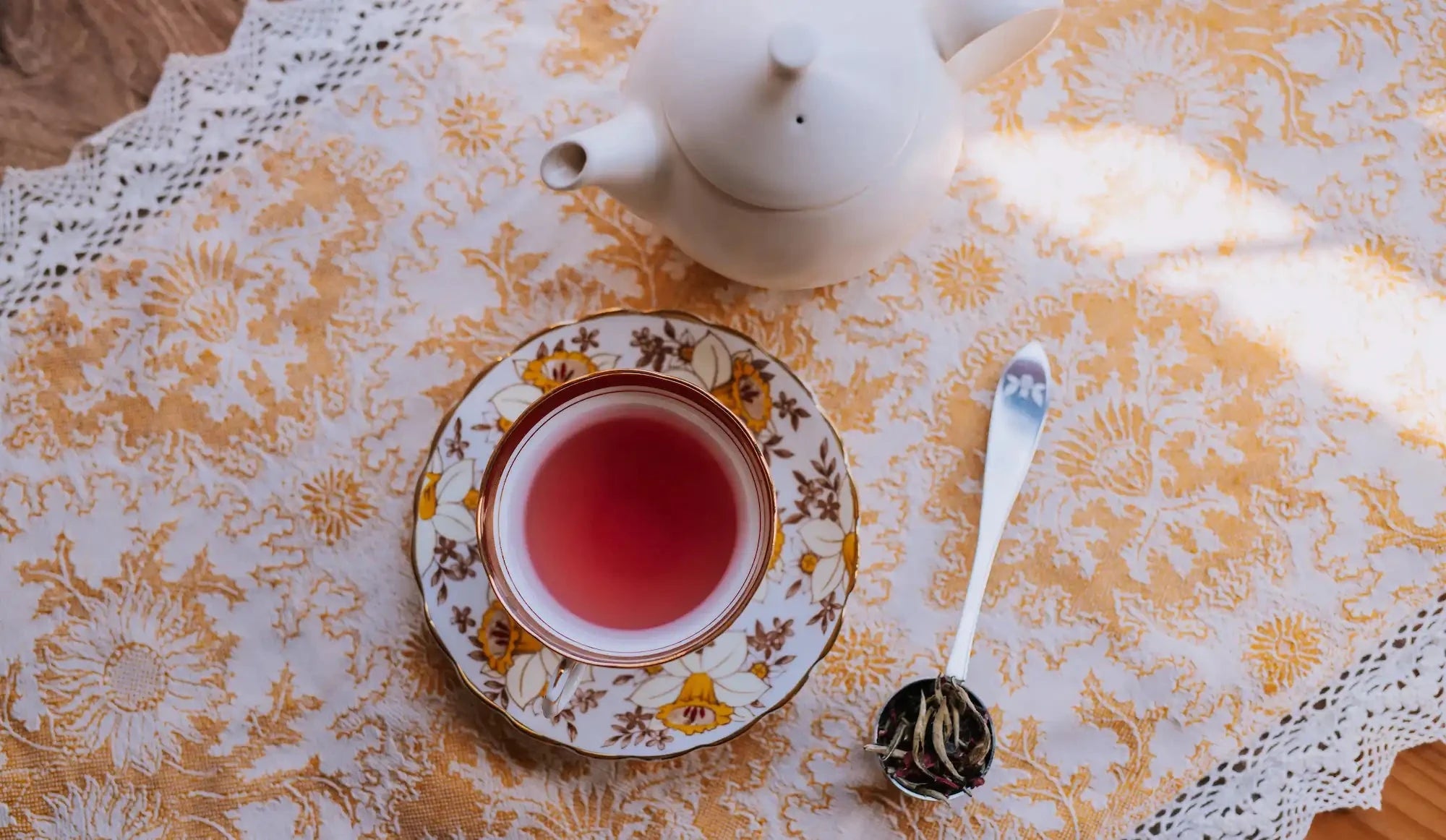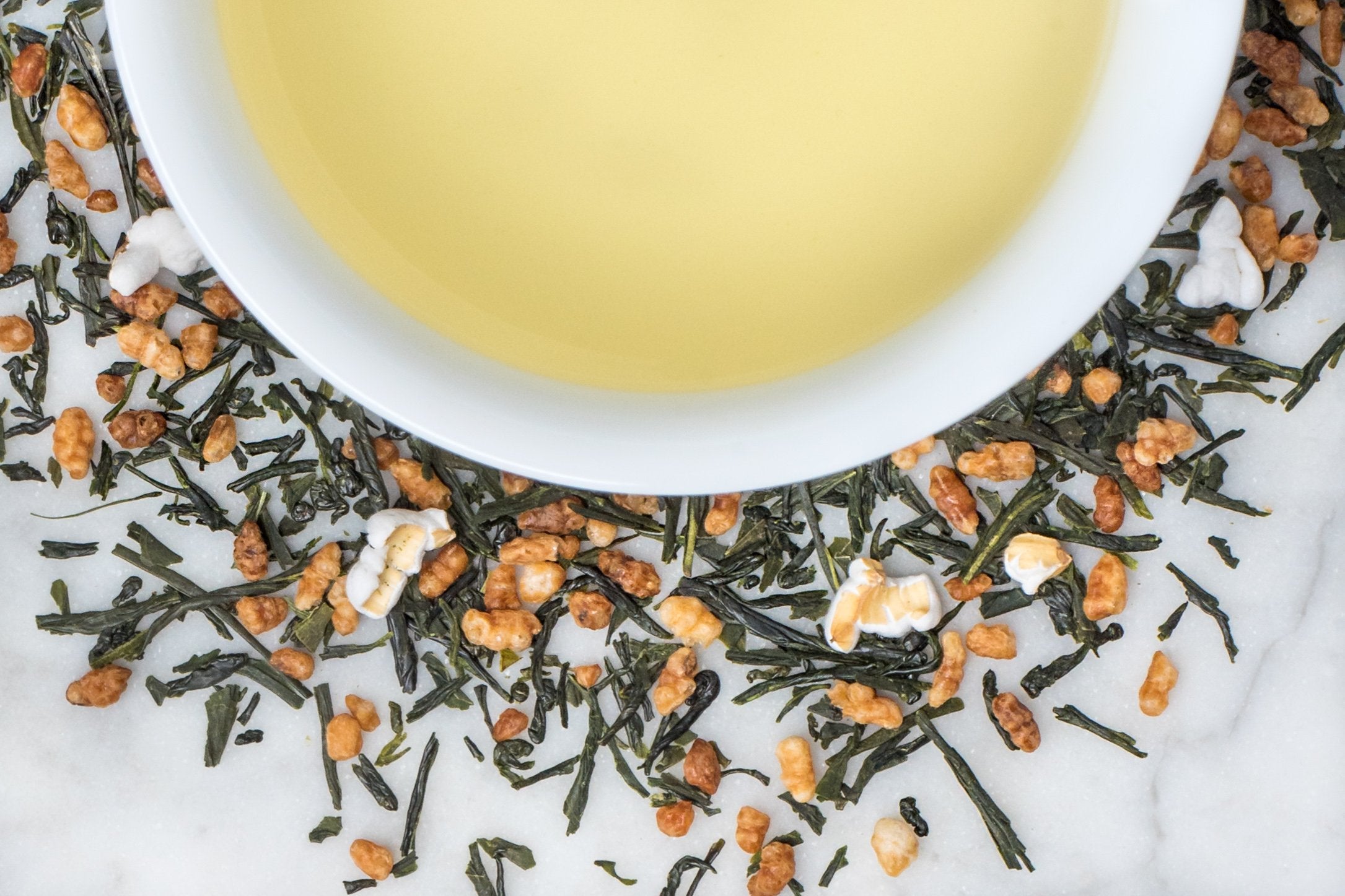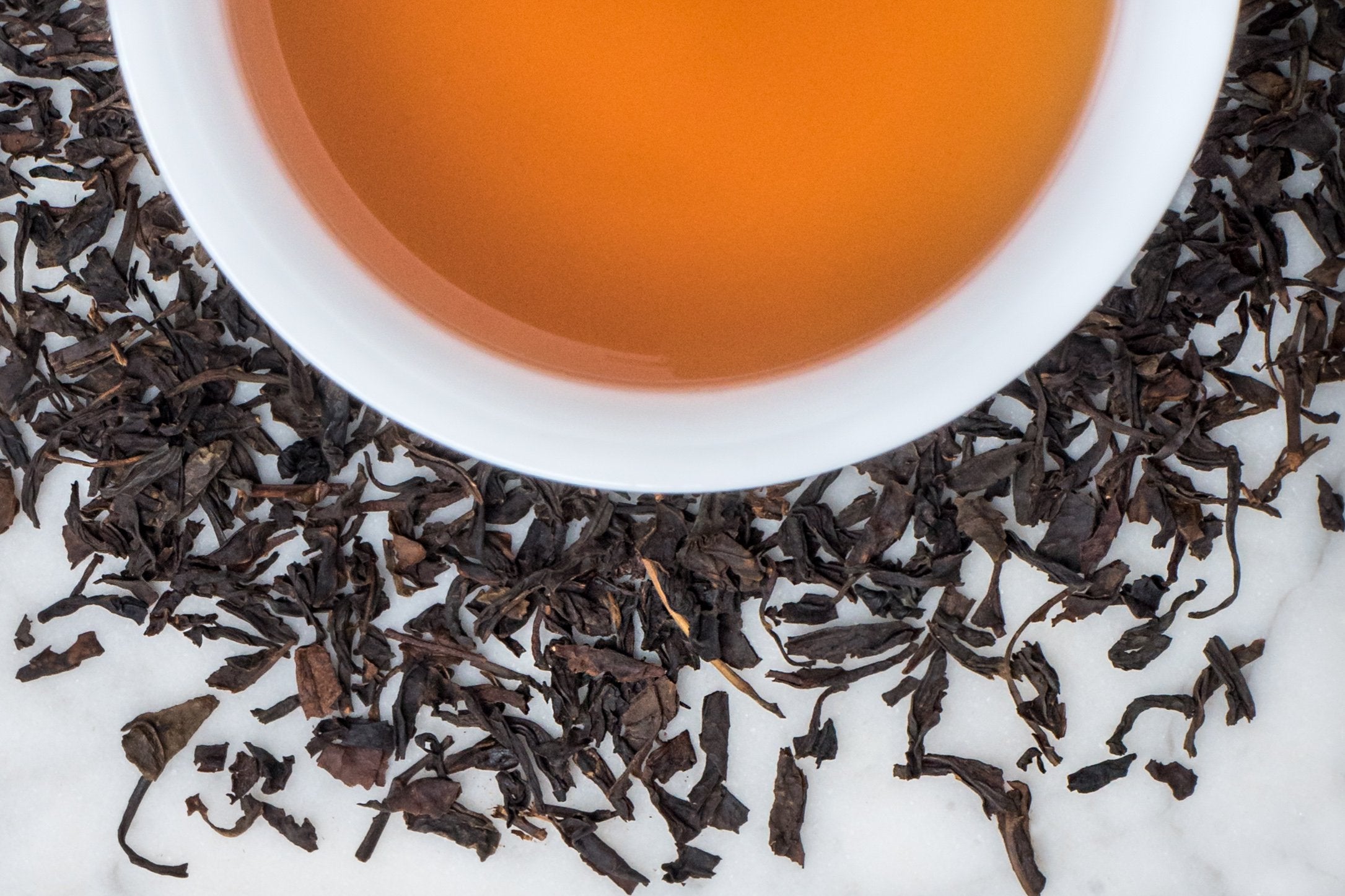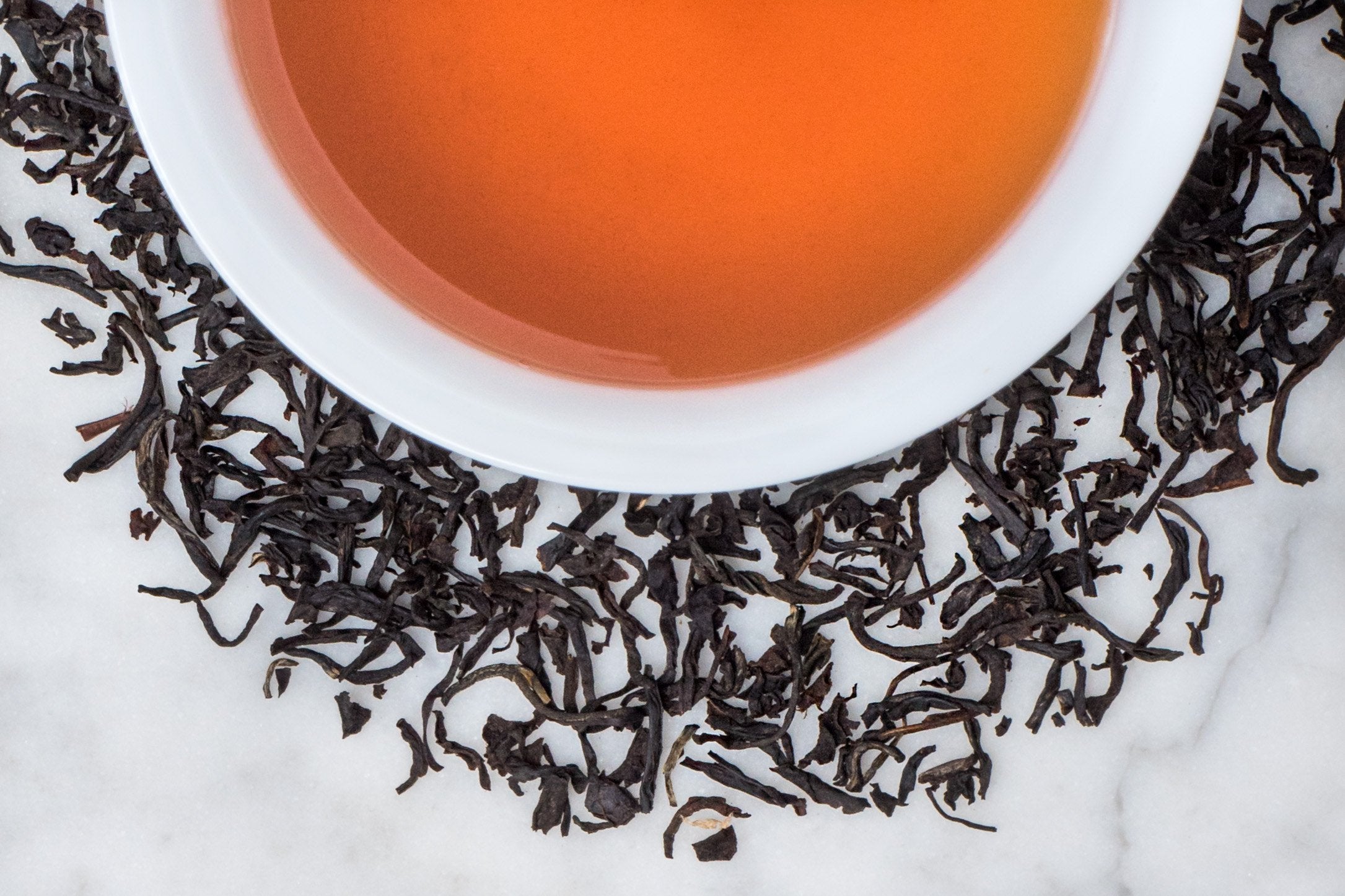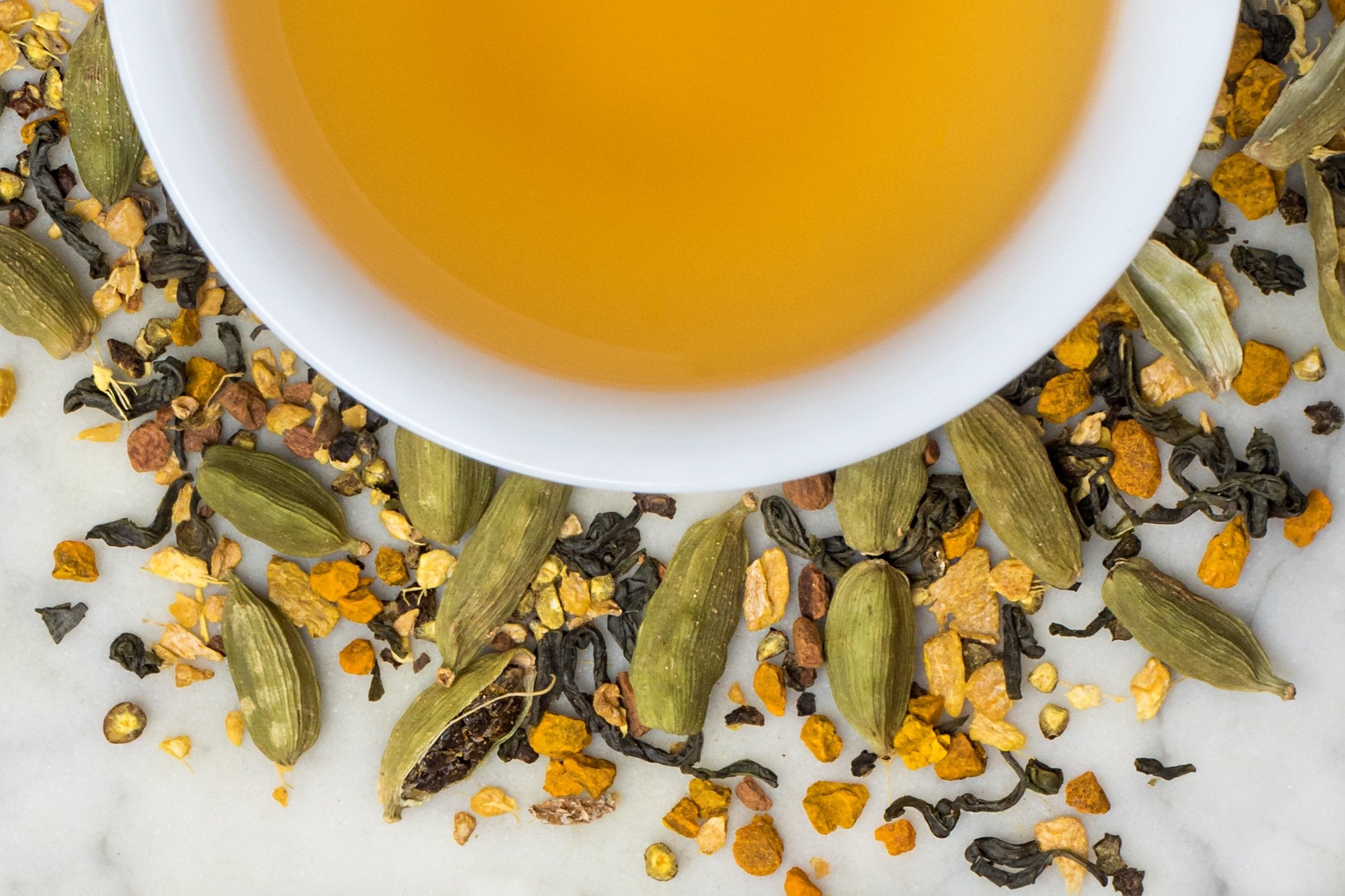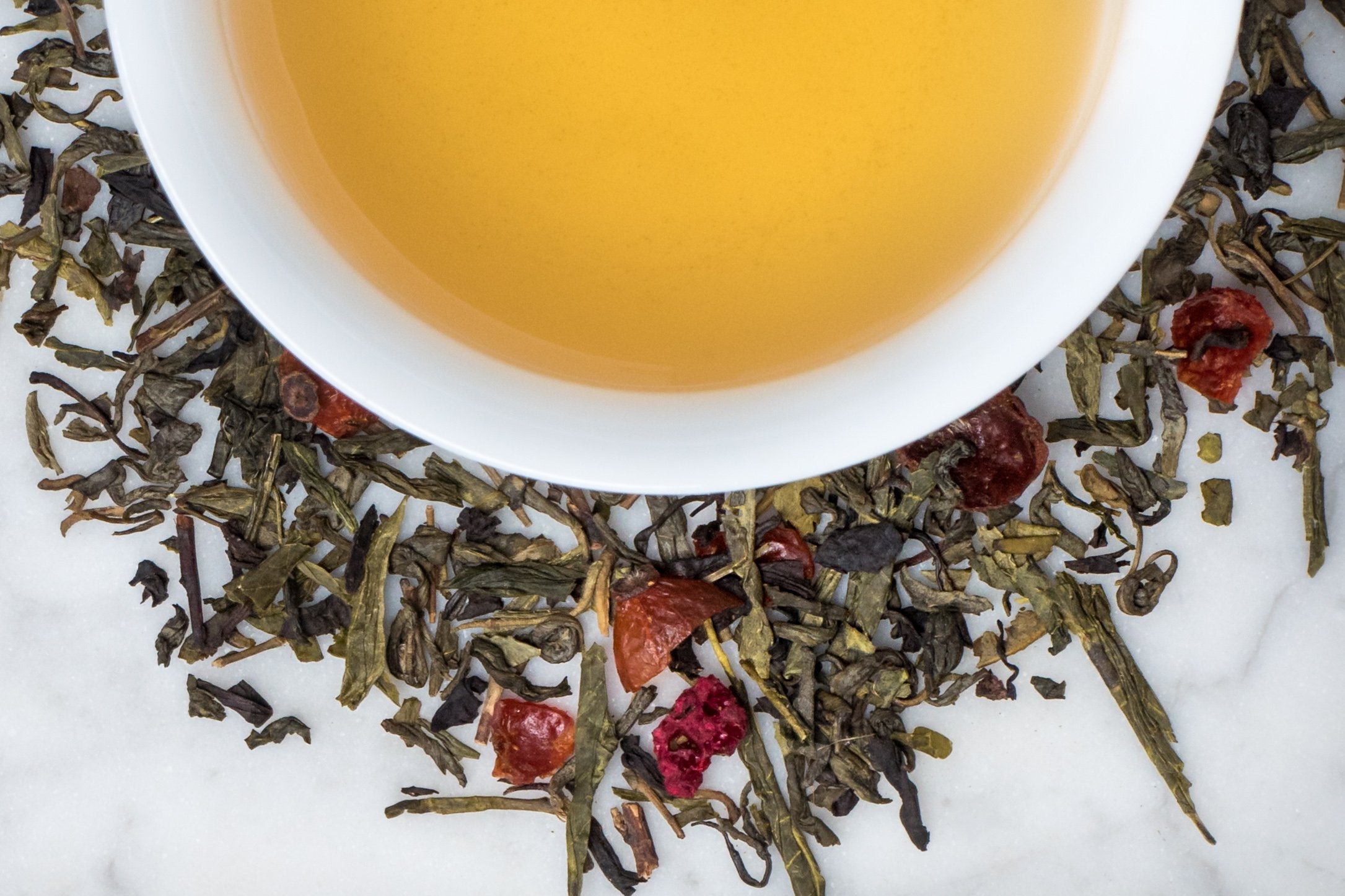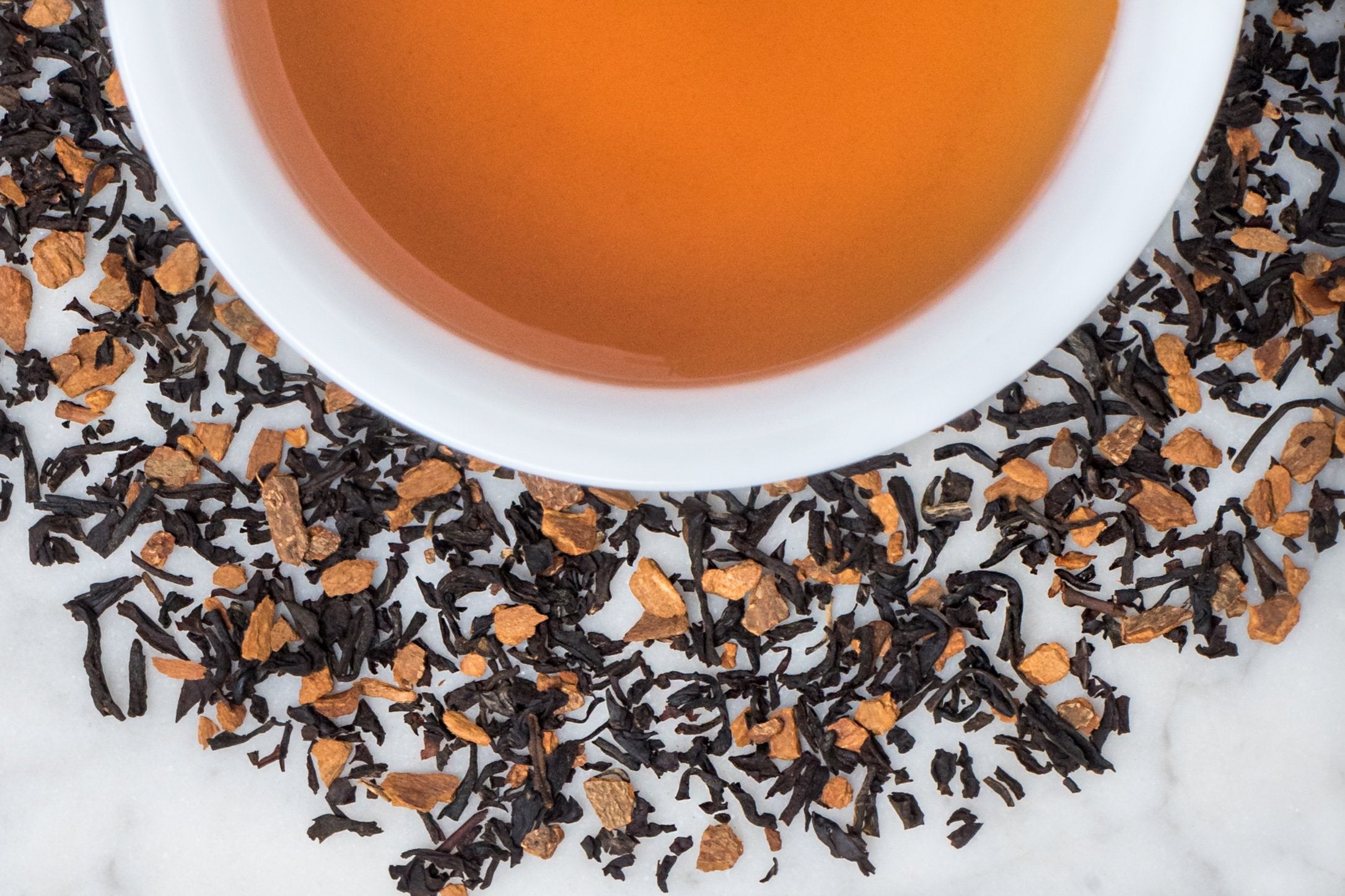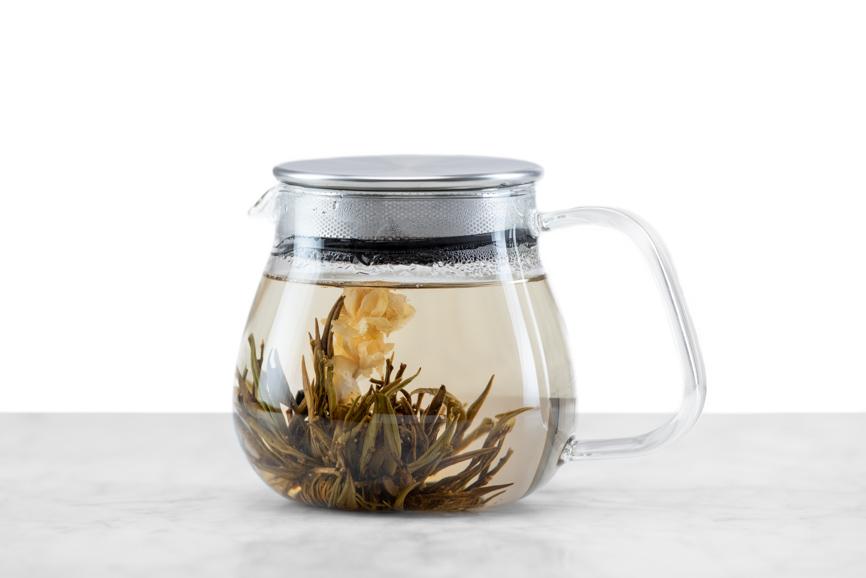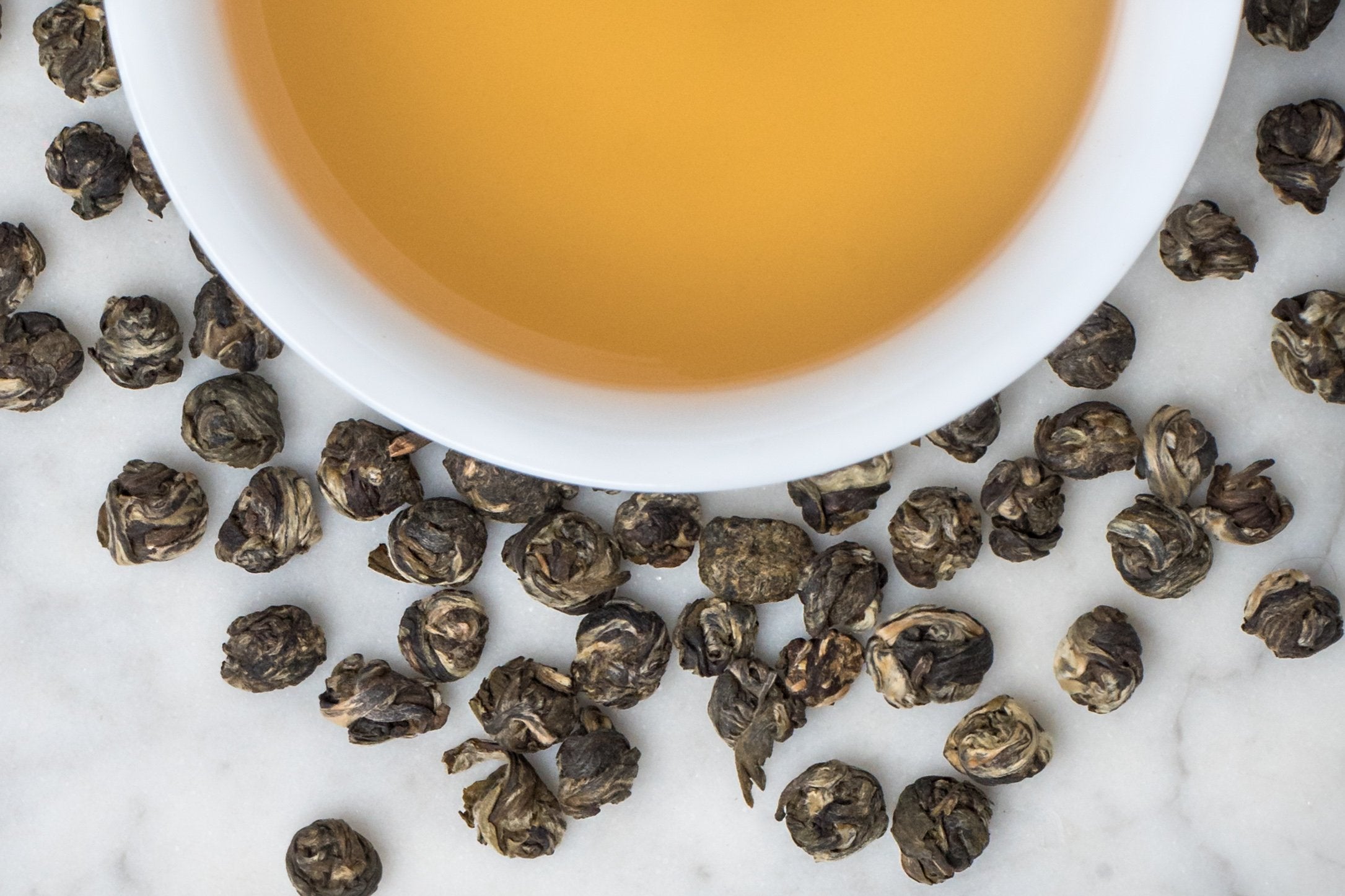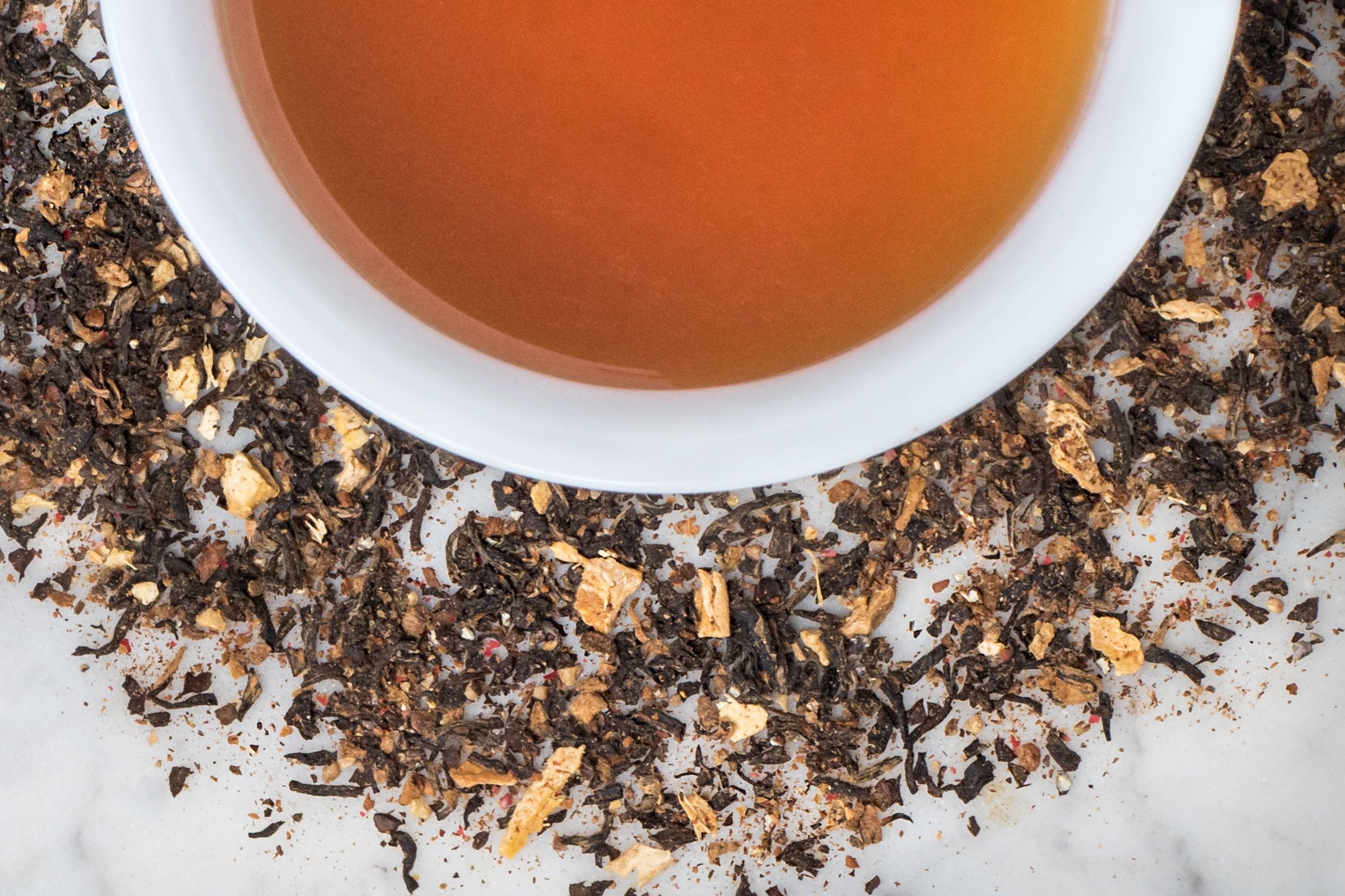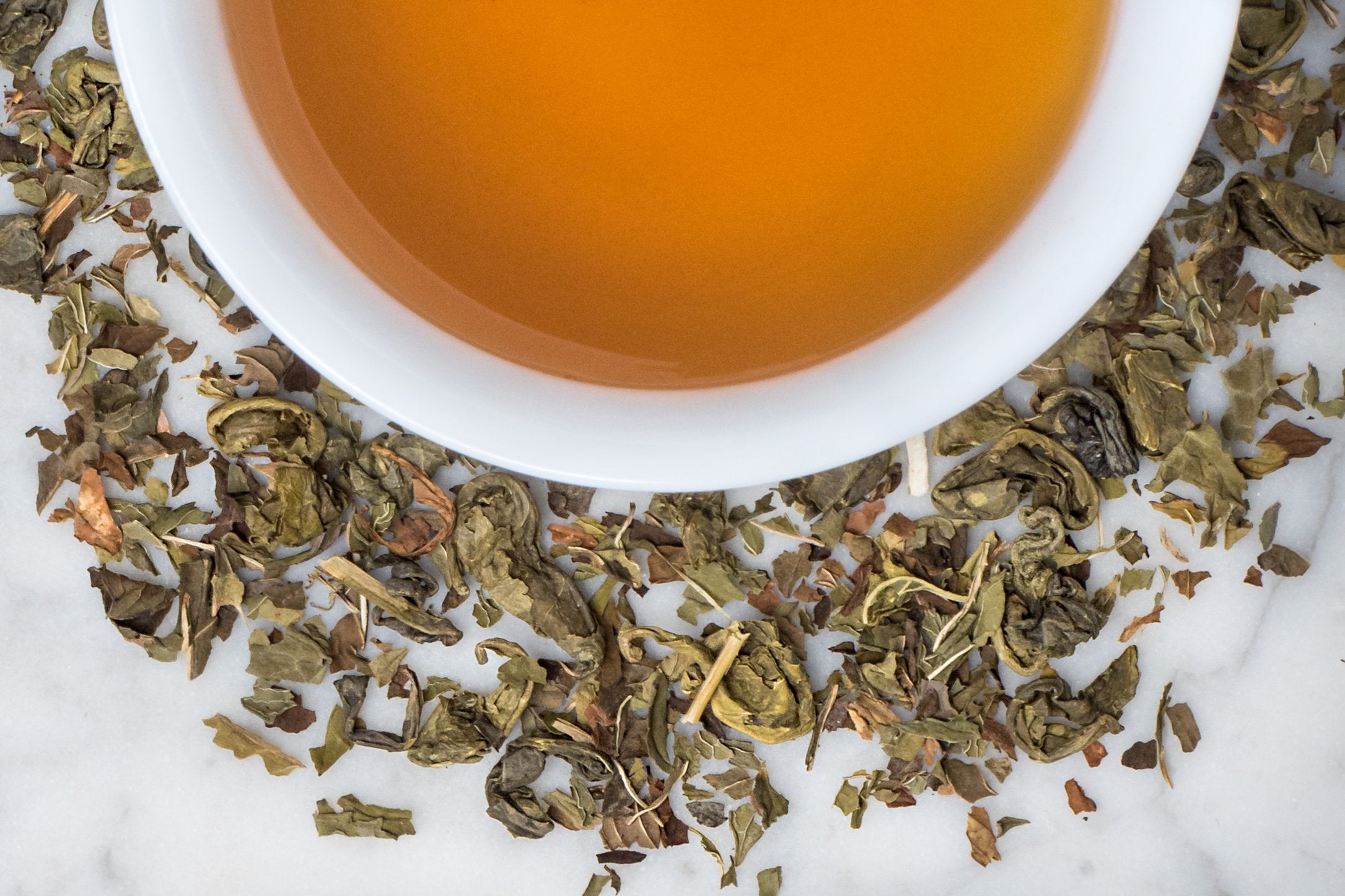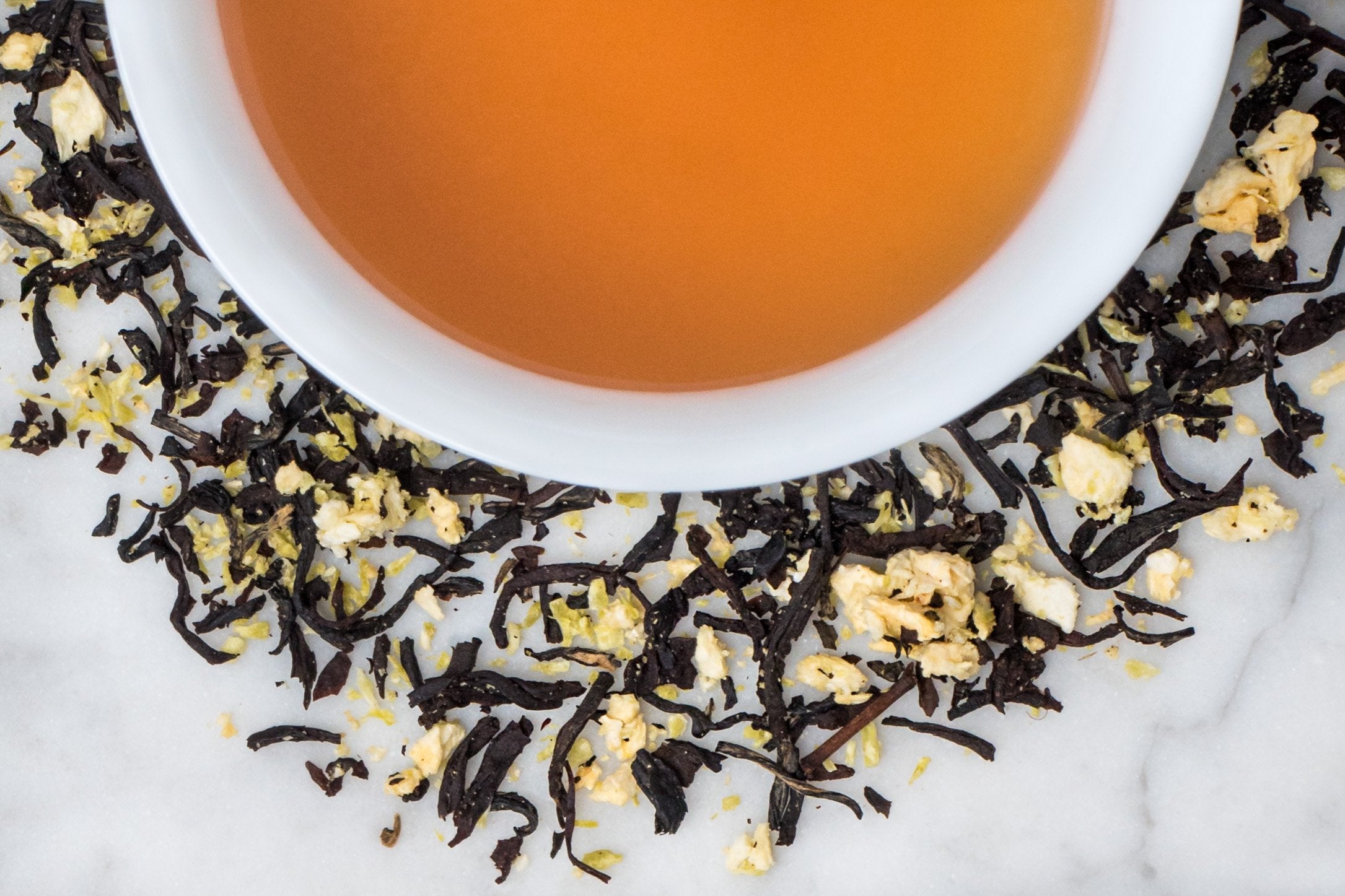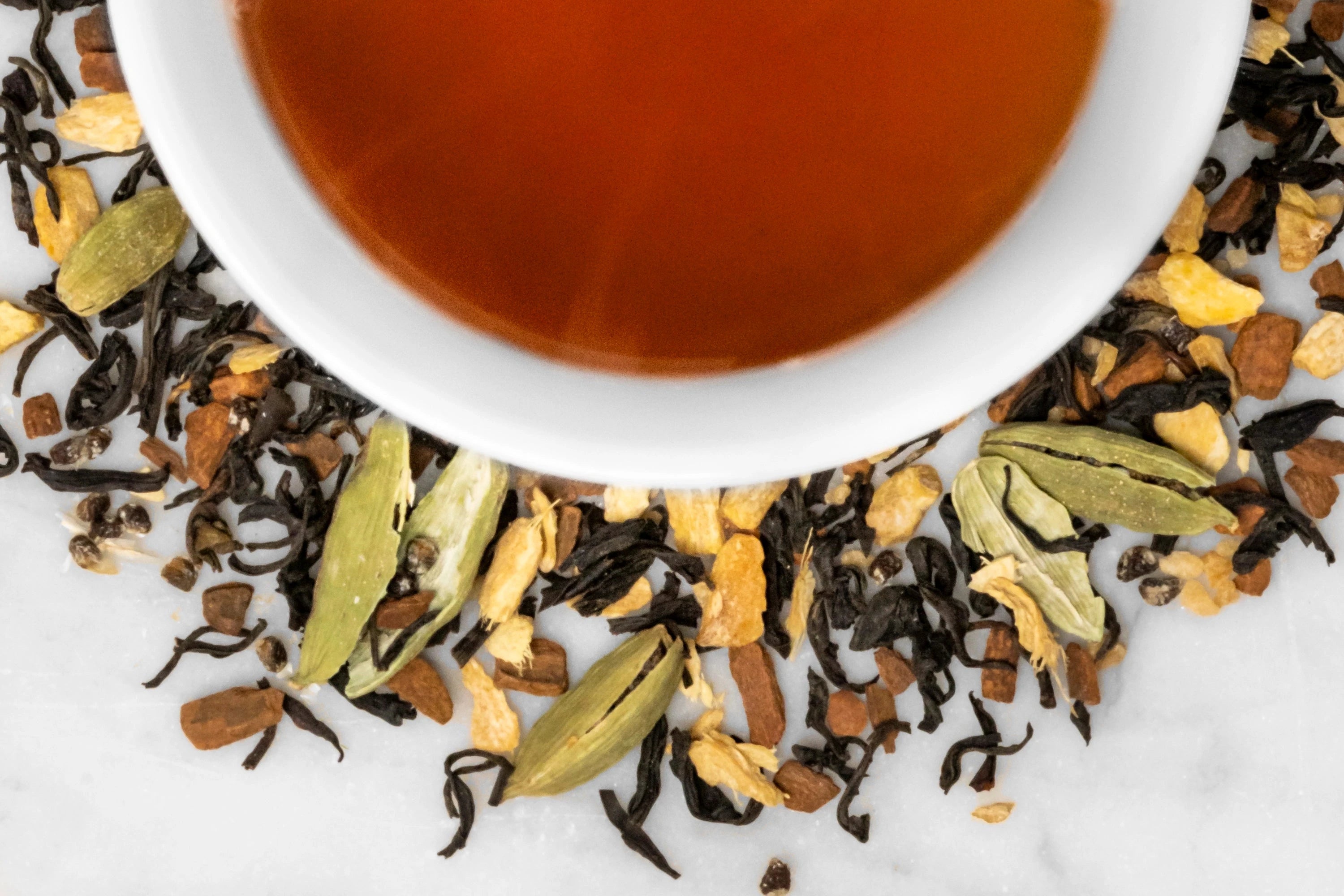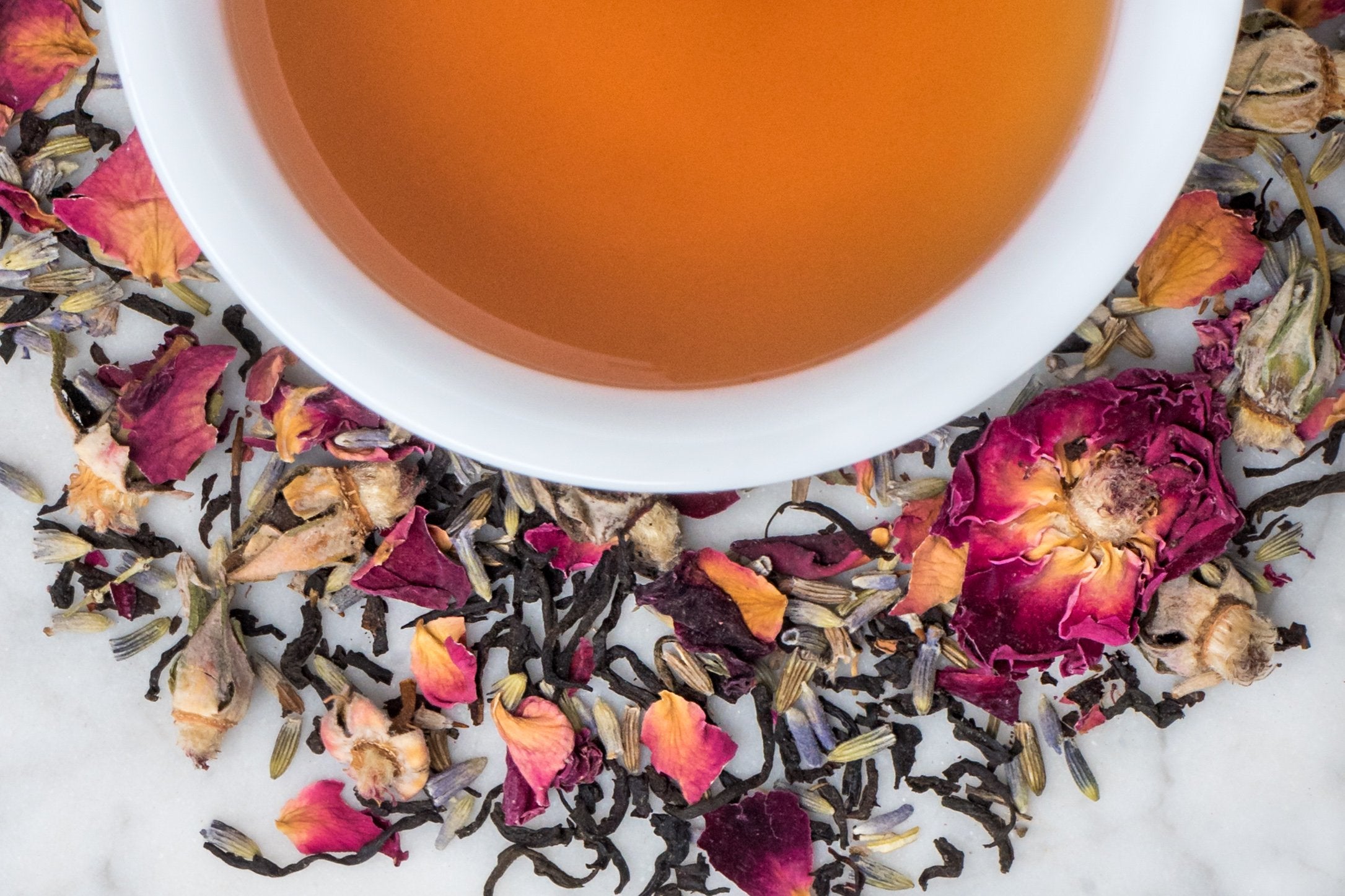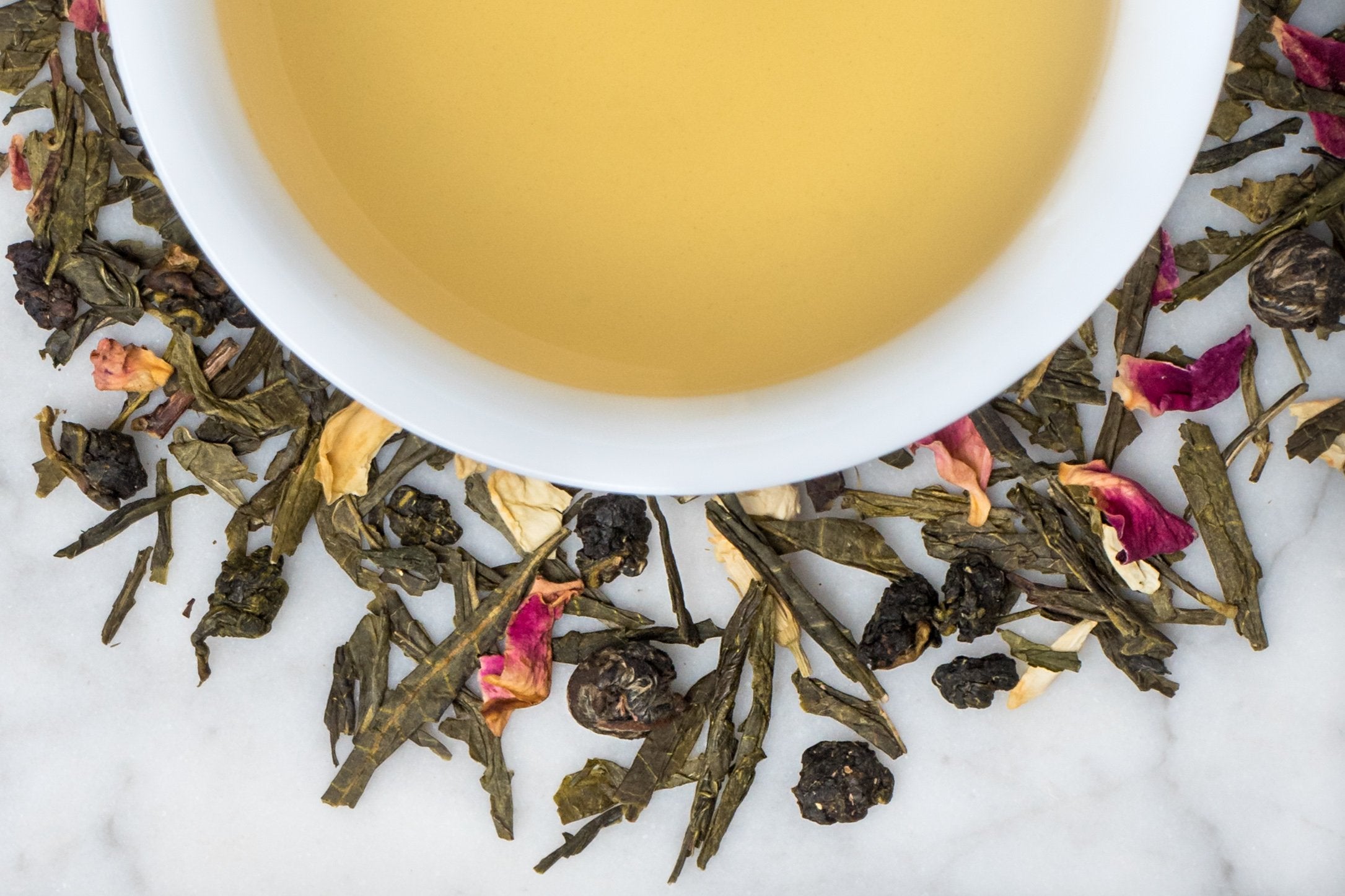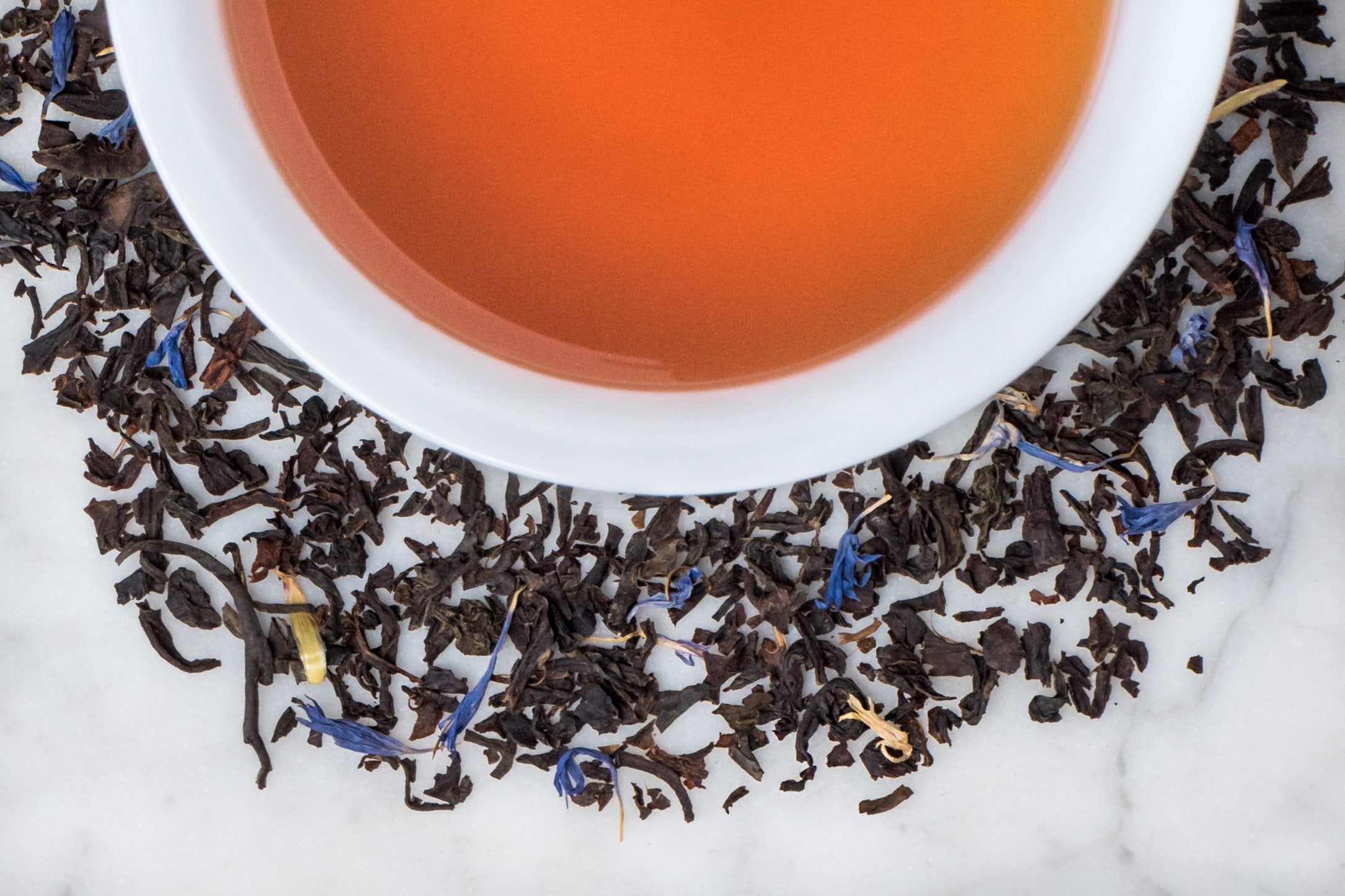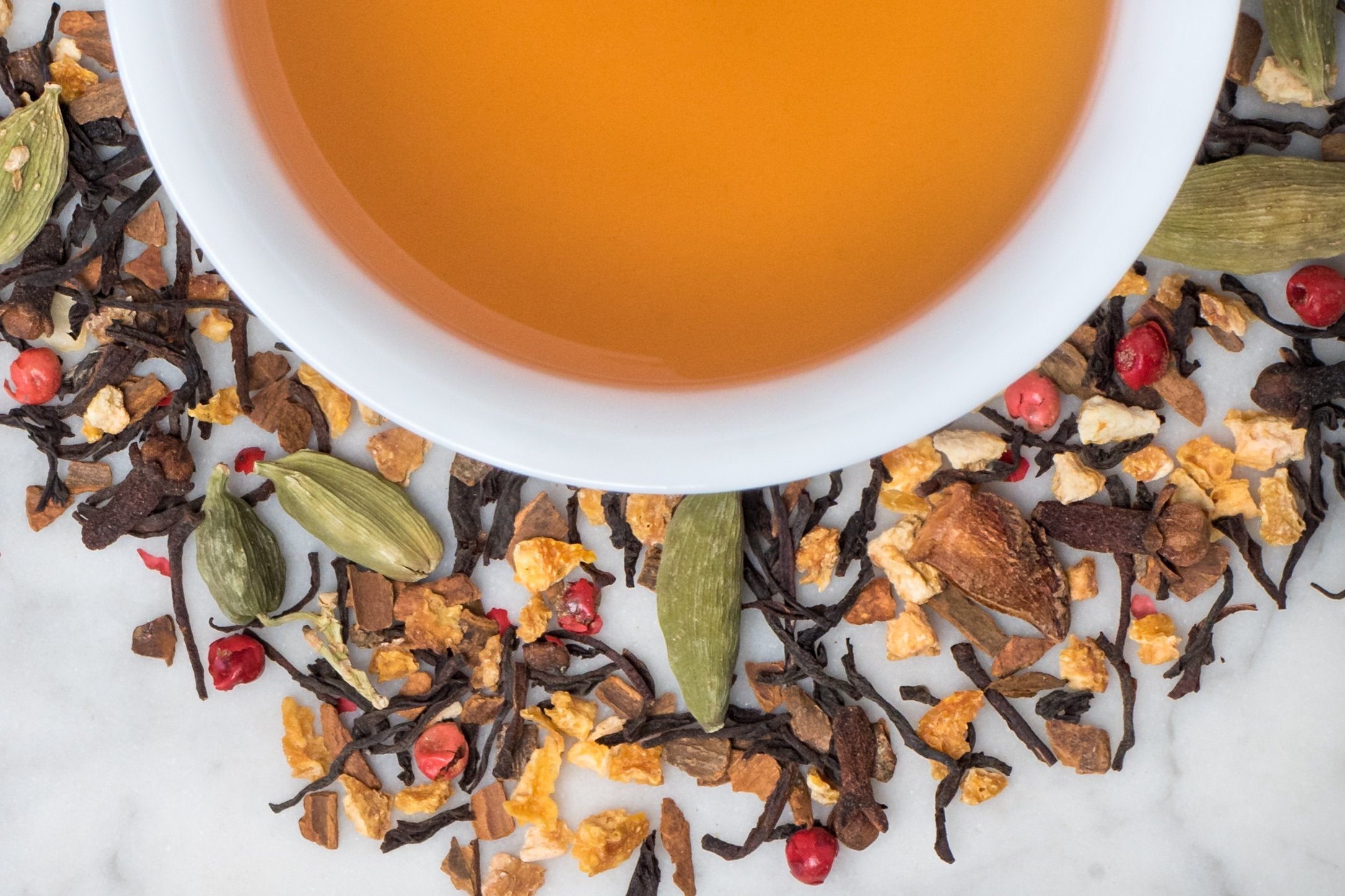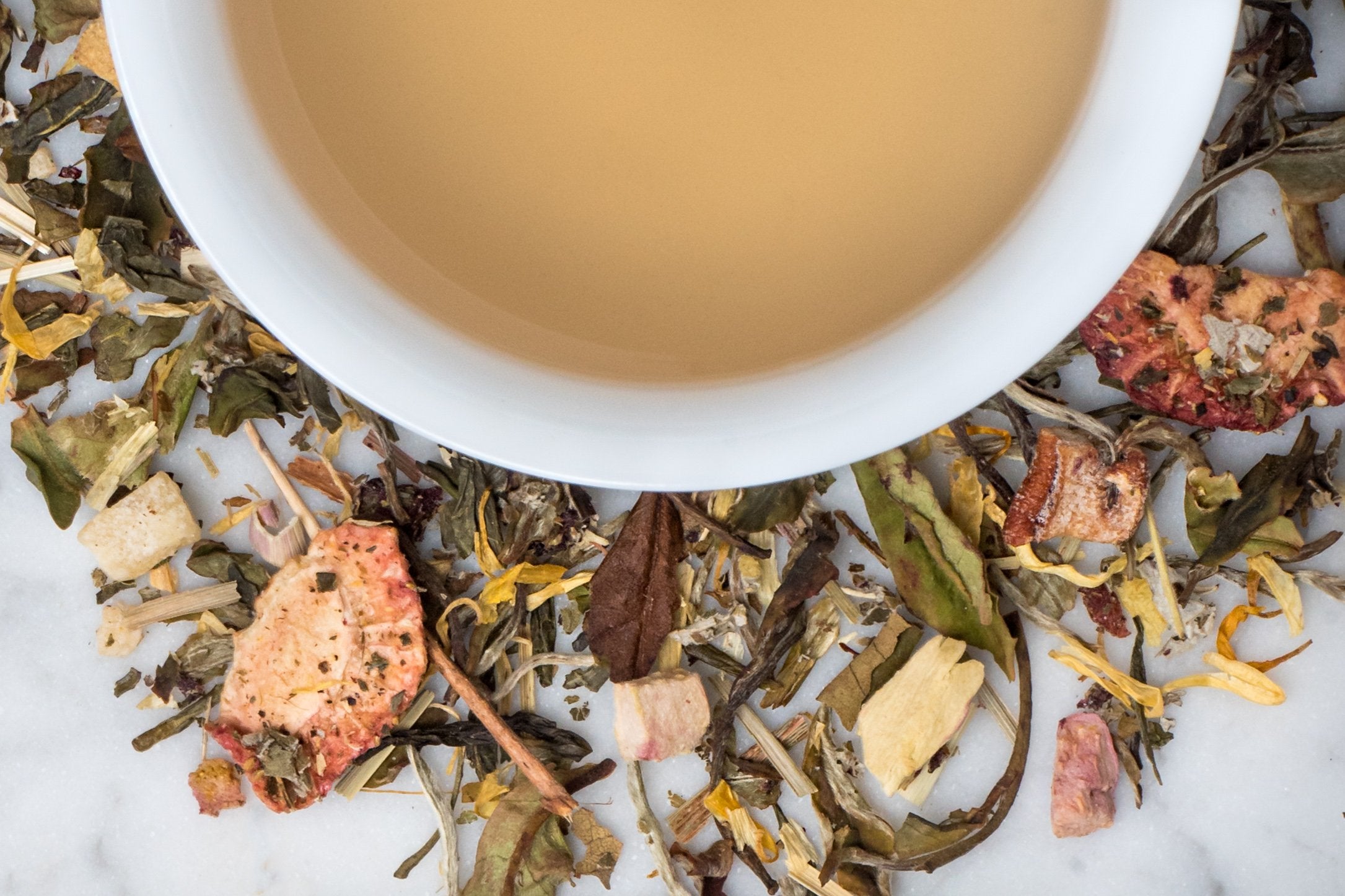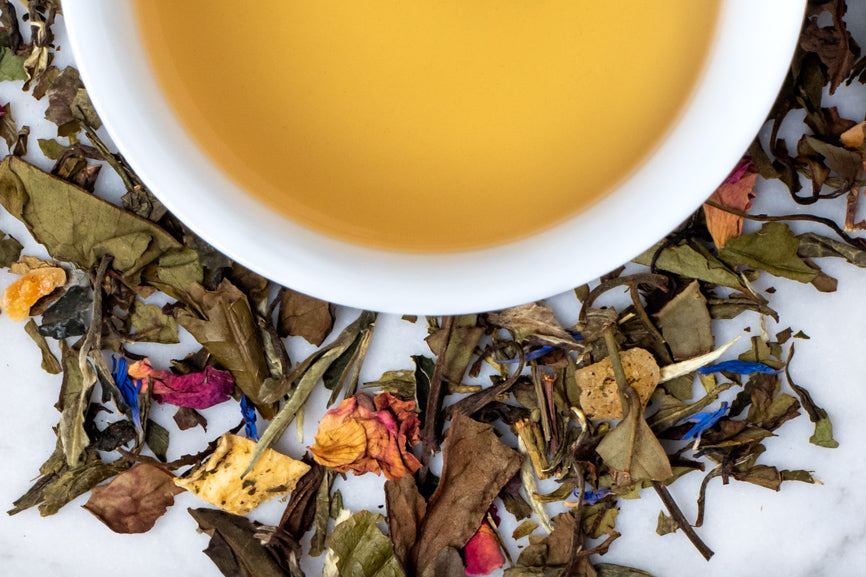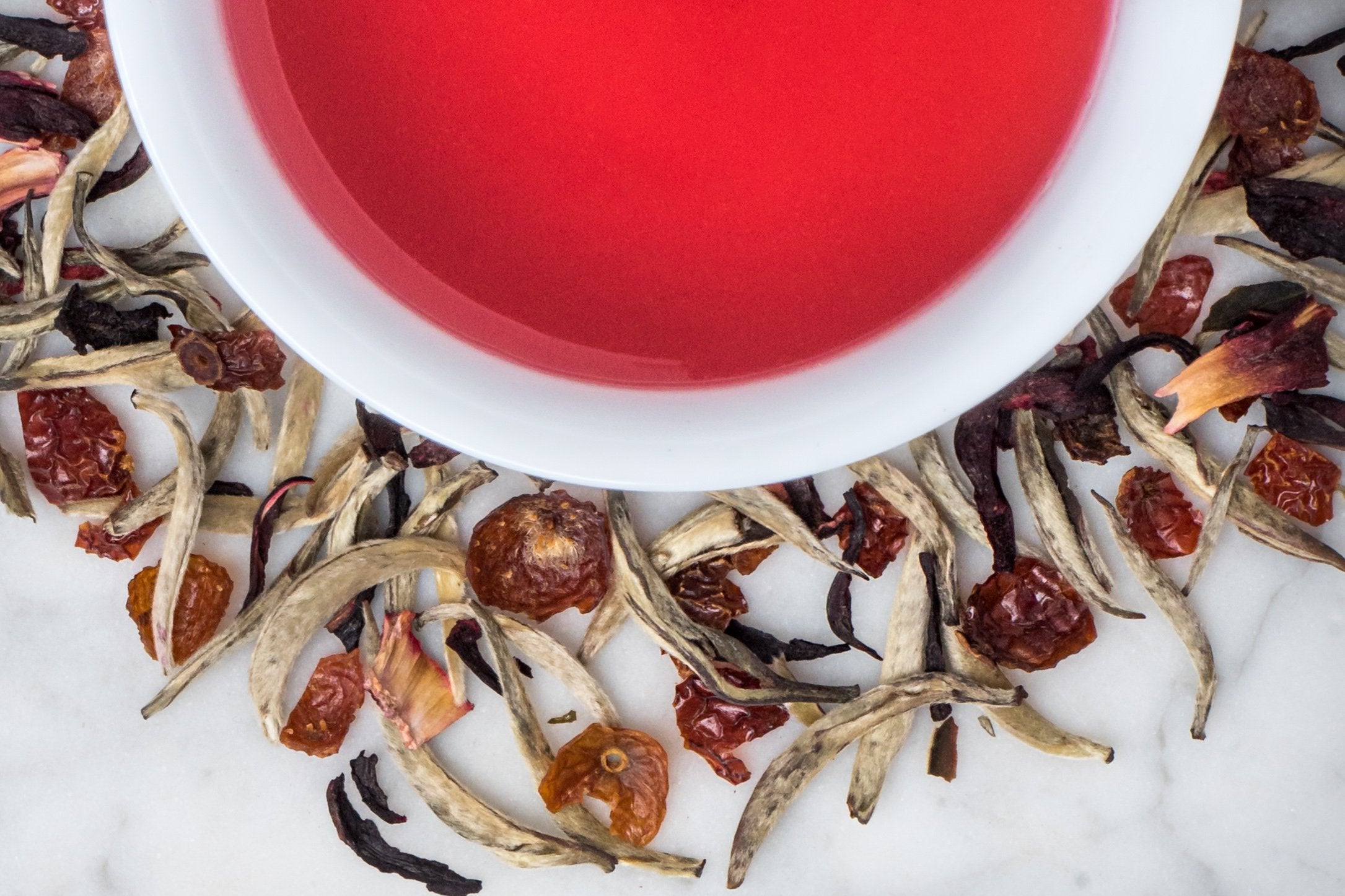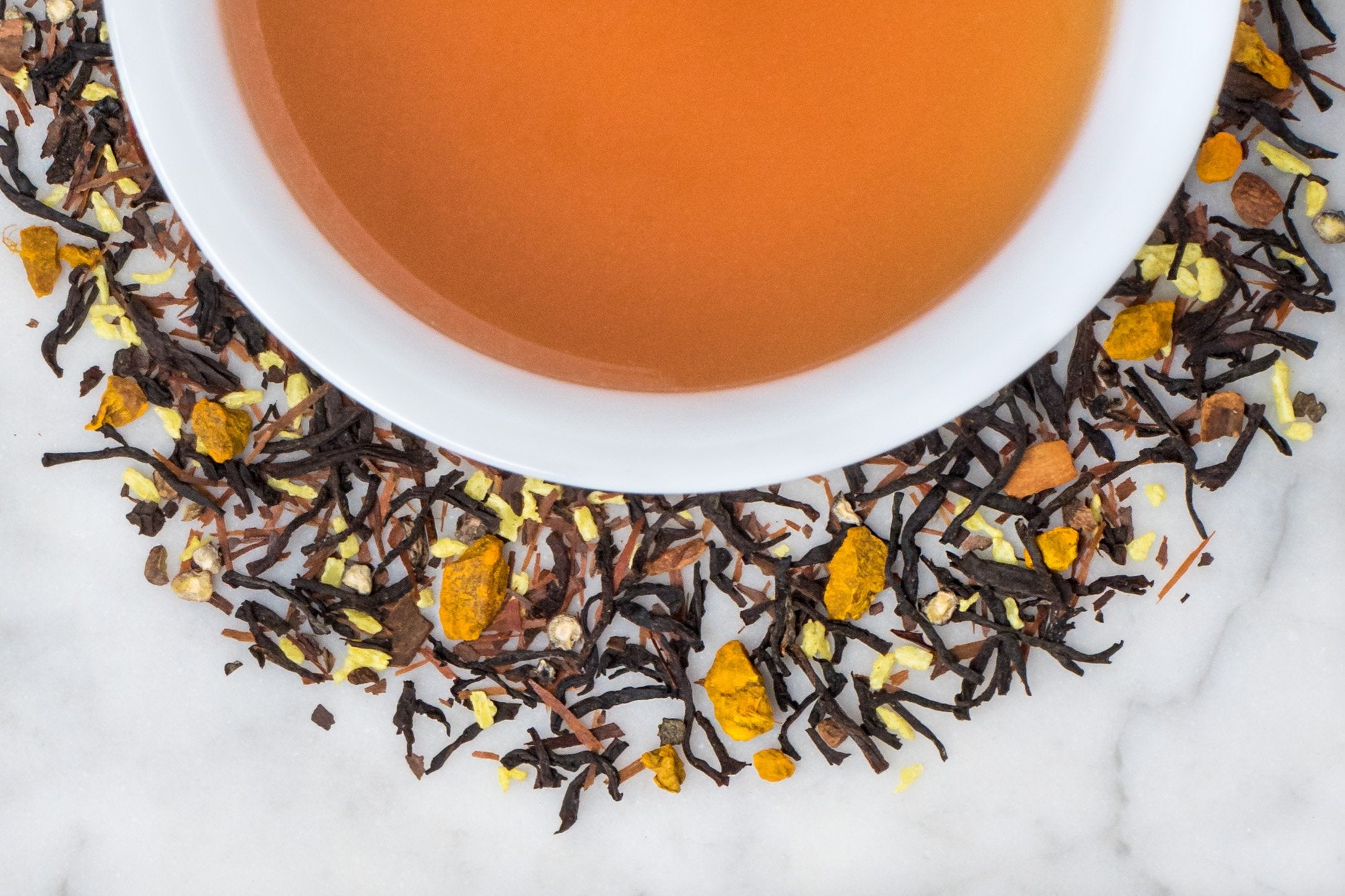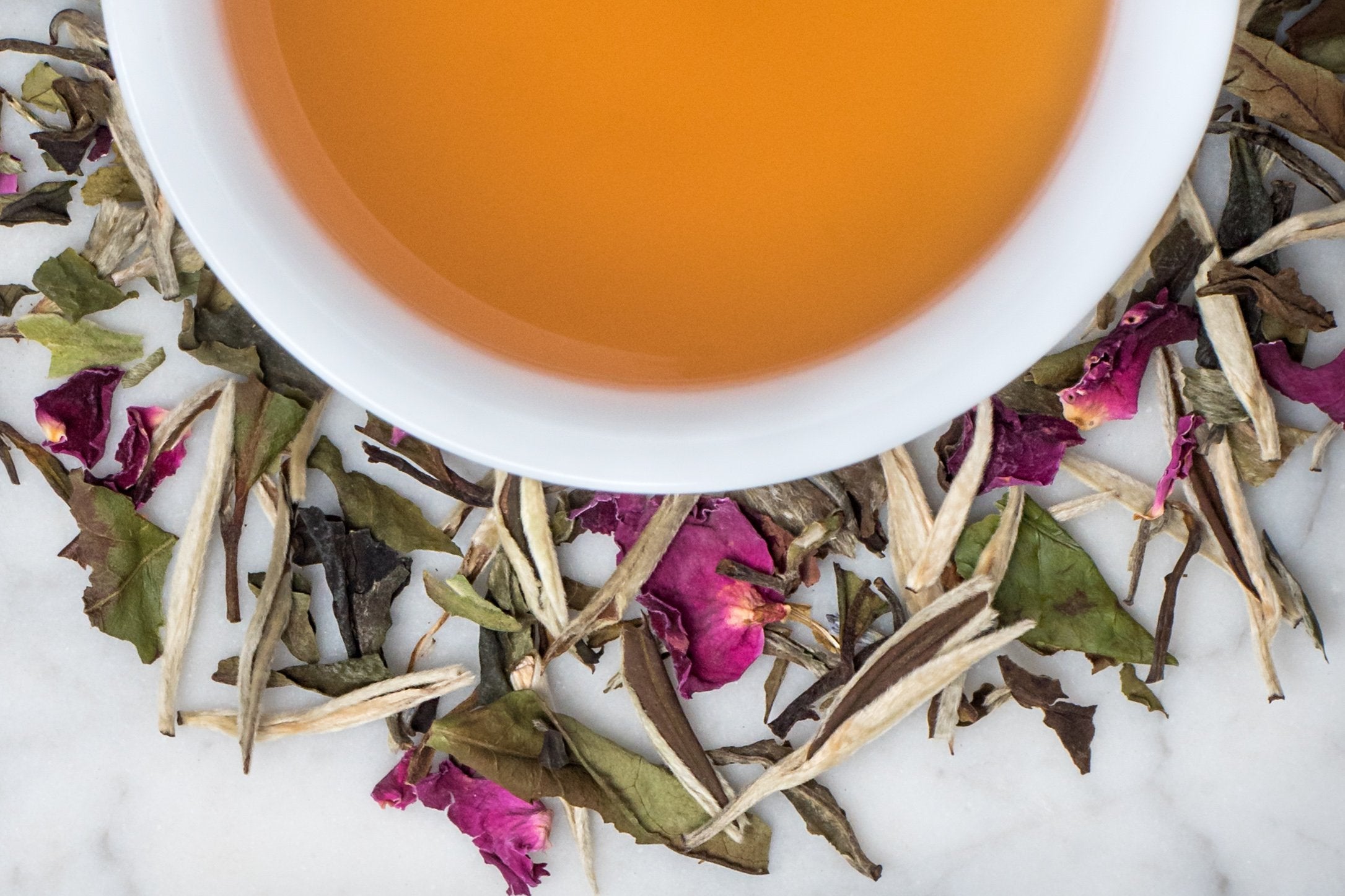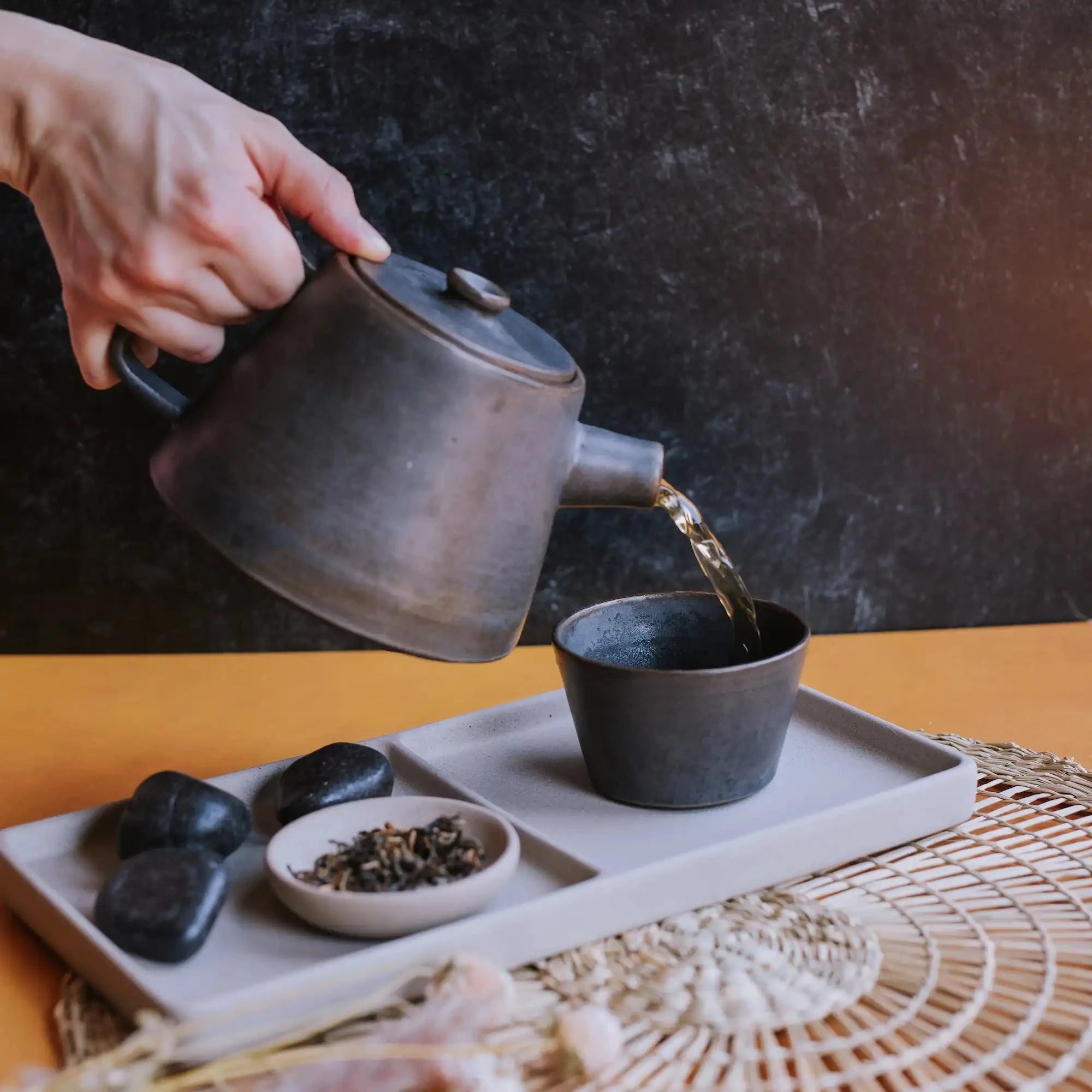What is Tea?
What is Scented Tea?
Scented Tea is, quite simply, a Traditional Tea blended with something that is not tea, like flowers, fruits, herbs, or spices.
As we've discussed previously in our What is Tea? series, all tea comes from the same plant: camellia sinensis. Scented Teas, unlike Herbal Tisanes, contain both leaves from the camellia sinensis plant AND fruits, flowers, herbs, spices, and other natural flavors - hence the Tea in Scented Tea but our preference for the phrase Herbal Tisanes over Herbal Teas.
Keep reading for a discussion of why we categorize Scented Teas together rather than in their corresponding Traditional Tea categories and a brief guide to brewing Scented Teas.
Why We Separate Scented Teas from Traditional Teas
“What's in a name? That which we call a rose / by any other name would smell just as sweet.” - William Shakespeare
When speaking with visitors to the shop about our Scented Tea collection, this Shakespeare quote from Romeo and Juliet often comes to mind. Our visitors wonder why we separate our Scented Teas from their traditional categories rather than shelving, say, Green Paddock Pom Pom with the Green Teas or Fair Trade Earl Grey with the Black Teas. After all, isn't Sweet White Peach a White Tea?
Technically, we're all right, and in another store it may make a lot of sense for the shop and their customers to have Scented Teas amidst the Traditional Tea categories.
We make the distinction, however, because our Traditional Teas are all what is known in the tea world as Single Origin teas, meaning each tea comes from one single tea estate and is distinct from harvest to harvest.
You can think about this distinction as sort of like a red wine blend versus a Cabernet Sauvignon. Some tea producers mix together harvests from several estates to create a uniform product year after year, just like some wine producers will mix grapes to produce a uniform product. We choose to buy our Traditional Teas from small, Fair Trade producers whose harvests have distinct terroir (taste or flavor of place) and may vary in flavor from year to year due to differences in growing conditions for each particular harvest.
Creating this distinction between our Scented Tea blends and our Traditional Teas is important to our mission of not only providing access to delicious beverages and honeys, but also to educate and inspire a love of tea and taste in everyone who has the chance to explore our collections.
The Exceptions
As with every rule, there are a few exceptions. For example, we categorize Genmai Cha (Sencha Green Tea with toasted rice) as a Traditional Green Tea and Lapsang Souchong (cedar-smoked Chinese Black Tea) as a Black Tea. For both of these exceptions, our choice to categorize them with Traditional Teas has to do with both perception and history.
Genmai Cha has a long history that started when Japanese peasants began using rice to stretch their tea stores. in this sense, then, Genmai Cha is just as much a traditional Japanese Green Tea as a Sencha or Kabusecha.
Genmai Cha
Lapsang Souchong, though technically a smoked tea, may actually be the original Black Tea. There are two origin stories for Lapsang Souchong. The most romanticized story involves an invading army during the tea harvest that caused leaves to oxidize and enterprising villagers saved the harvest by quickly drying the leaves over the fire. A more practical tale revolves around tea producers trying to find a way to preserve the traditional and delicate green teas for the long overland or oversea voyages to Europe. Whichever version speaks to you (we like the one about the invading army ruining the harvest), it seems wrong to us to categorize Lapsang as anything other than Black Tea.
Lapsang Souchong
A Semantic Aside: Why Not Call It Flavored Tea?
Ok, so saying you accept that there's a good reason for not shelving the Scented Teas in their respective Traditional Tea categories, you may still be left with the question "Why Scented and not Flavored?".
This is another one of those nit-picky items of semantics that we have a very good reason for being nit-picky about! We try to steer away from using the word "Flavored" because we also work very hard to avoid any sort of artificial flavoring in our teas and tisanes!
For us, Scented is simply a better descriptor of our approach to additional flavors in teas. In curating our Scented Tea collection, we purposefully tasted for blends in which the tea and the scent enhanced each other, instead of competing. We wanted teas that were scented with fruits, florals, herbs, and spices but still undeniably teas first and foremost.
Brewing Fruity, Floral & Spiced Teas
How to Brew Scented Teas
Scented Teas are best brewed according to their base tea. You can find the base tea in the ingredients section on each tea's product page on our site, and also on the back label of the bag itself (along with a shortcut brewing guide!).
Once you've determined the base tea, we recommend brewing as follows, using a brewing ratio of 5 grams of tea to 16 ounces of water.
How to Brew
Scented White Teas
How to Brew
Scented Green Teas
How to Brew
Scented Oolong Teas
How to Brew
Scented Black Teas
How to Brew
Scented Aged Teas
How to Brew Tea
The Brewing Guide
Explore our in-depth guide to brewing all your favorite teas.
Shop Scented Teas
From $ 2.30
From $ 3.80
From $ 5.00
From $ 4.00


